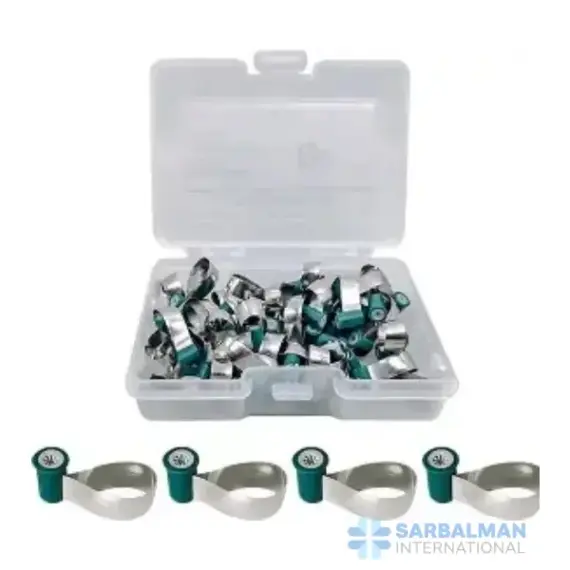Matrix Bands
Free!
Matrix bands are contoured stainless steel strips that form a temporary wall around a tooth during fillings. They hold and shape composite or amalgam, prevent overhangs, and restore natural contact points. Use them with a universal retainer or sectional ring for Class II restorations, core build-ups, and everyday clinical work. Durable, autoclavable, and easy to adapt, they deliver reliable contours and faster finishing for consistent restorative results.
Description
Matrix bands are thin, contoured metal strips used to create a temporary wall around a tooth during restorative procedures. Wrapped around the crown and stabilized with a retainer or sectional ring, the band shapes the proximal surface, seals the gingival margin, and contains amalgam, composite, or glass ionomer while it sets. A well-fitted band prevents overhangs, restores natural contact points, and saves finishing time.
Key features and benefits
• Pre-contoured profile helps reproduce anatomical form and tight proximal contacts
• Smooth, burnishable edges adapt closely to enamel for better marginal seal
• Corrosion-resistant stainless steel supports repeated autoclave sterilization
• Compatible with universal (Tofflemire-style) retainers and sectional ring systems
• Available in multiple widths and thicknesses for molars, premolars, and pediatric cases
Typical uses and applications
• Class II MO/DO/MOD restorations in posterior teeth
• Core build-ups and temporary restorations
• Everyday general practice, teaching clinics, and mobile dentistry setups
How they compare
• Universal bands with a retainer are quick to place and highly versatile, especially for amalgam and multi-surface preparations.
• Sectional bands used with separation rings can produce exceptionally tight contacts for many composite cases.
• Transparent plastic bands are helpful in anterior composites but lack the rigidity of metal for posterior load.
Best practices
• Select a width that extends just beyond the marginal ridge and a thickness that balances rigidity with adaptability.
• Burnish lightly against the adjacent tooth to establish contact before curing.
• Clean, inspect, and sterilize accessories according to standard dental infection-control protocols to maximize longevity and performance.




